How do you know if a brown thrush is male or female?
What does a female brown thrush look like?
Are female brown thrushes bigger than males?
behavioral difference
sing and call
nesting and feeding
Can a female brown thrush raise her young alone?
Female Brown Thrush FAQs
brown thrush (Toxoplasma red) is a sweet-singing but shy songbird from the Mimidae family. They are the only thrashers in the central and eastern United States, being replaced by eight other species in the west and south.
Identifying the sex of these birds can be a big challenge for birders, so how do you tell a female brown thrush from its male counterparts?
It can be difficult to tell females from males because the females look similar, although the females are less vocal and less aggressive than the males. Small size differences are invisible, so bird watchers must rely on a bird’s behavior for clues to its sex.
The brown thrush is the state bird of Georgia. You’re most likely to spot these birds amidst dense, intricate vegetation, or running around at lightning speed among bushes and other feeding grounds. If you have the right perches in your yard, you might even be lucky enough to get these shy birds to a bird feeder.
Read with us to learn all about the female brown thrush, a mysterious American songbird.
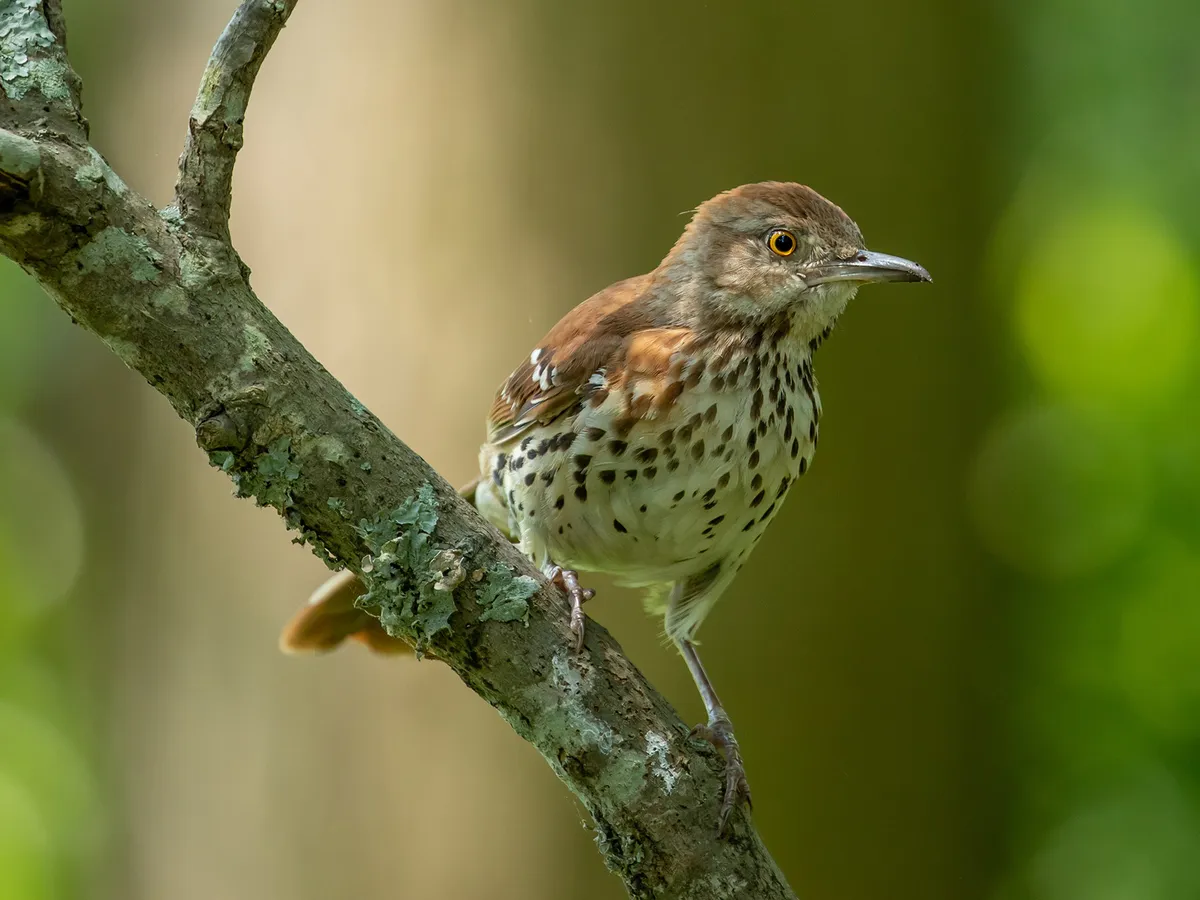
Male and female brown thrushes have the same plumage
How do you know if a brown thrush is male or female?
Male and female brown thrushes can be difficult to tell apart because they have the same coloration and markings. The sizes vary slightly, although these won’t be of much help to the average birder.
Brown thrushes are shy and elusive birds, but males often give up cover to sing loudly in the treetops. Females are far less outgoing, so look for them on the ground or in nearby dense vegetation.
Read on to learn more about what a female Brown Thrasher looks like.
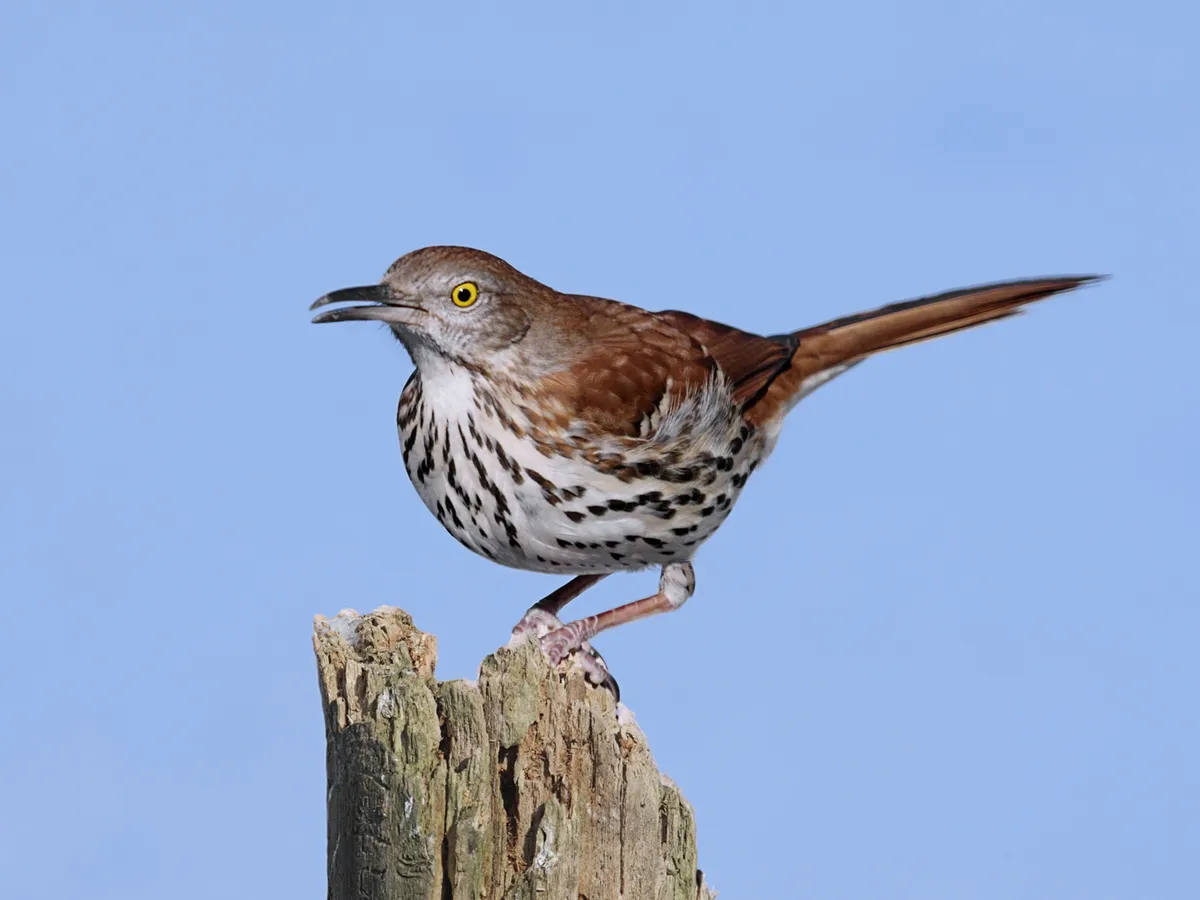
Behavior is the best way to distinguish female brown thrushes
What does a female brown thrush look like?
Female Thrashers are large songbirds with long, strong legs and long tails. They are rich reddish-brown above, with a pair of lighter stripes on either side of the wings, most noticeable in flight. Their underparts are whitish, with distinct dark brown stripes on their chest and abdomen.
Female brown thrushes also have large, slightly downward-curving bills and sharp yellow eyes. The sides of the head are gray with light whisker stripes.
It is difficult to distinguish them from males by appearance alone, and they can be confused with other Thrashers, although they are the only species in most of their range.
Read on to learn how to tell the female brown thrush apart from similar American birds.
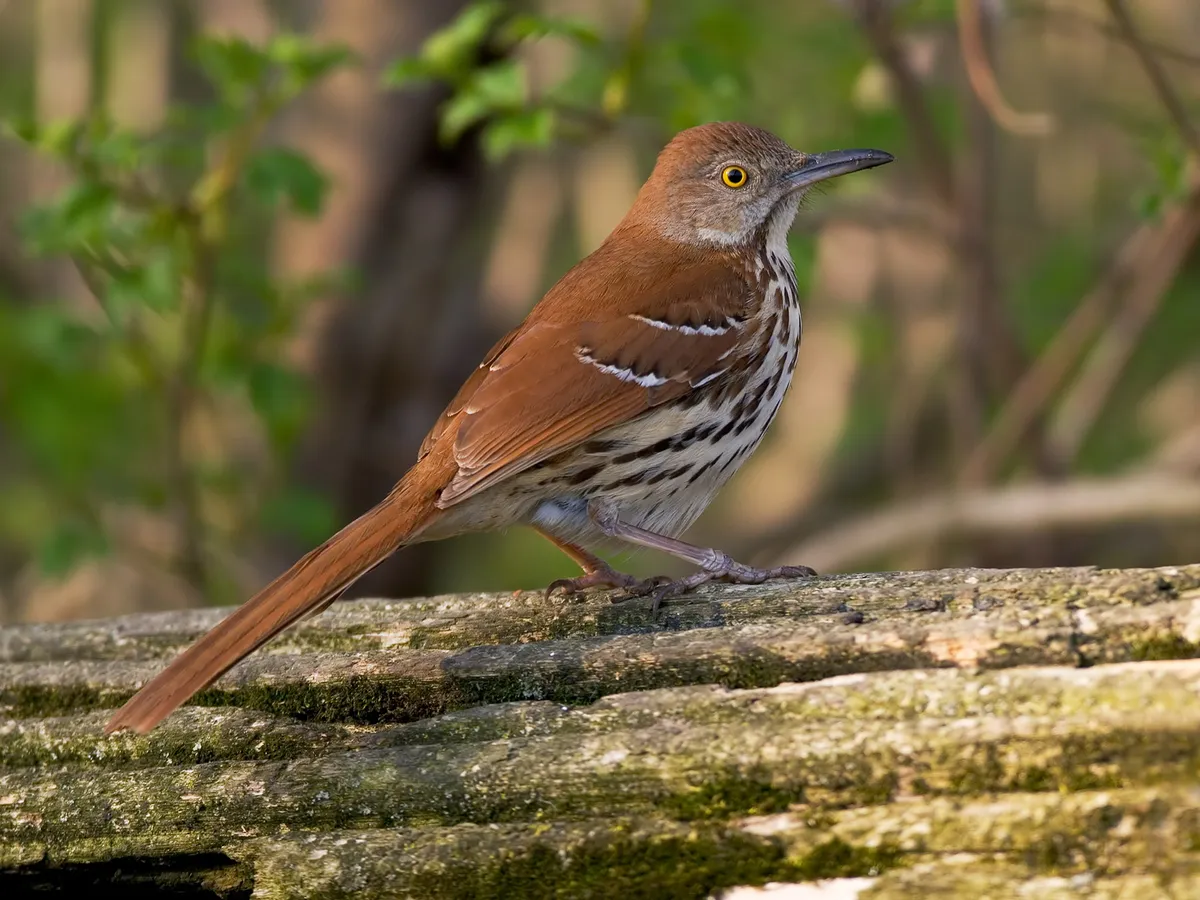
Close up of a Brown Thrasher perched on a log
Same species
It is easy to confuse the brown thrush with the long-billed thrush (Toxoplasma gondii). These similar birds do not usually occur together, although they overlap in parts of Texas. Identification can be difficult in these cases, although the long-billed thrush has orange (not yellow) eyes and a more curved beak.
The female brown thrush may also be confused with thrushes of the Veery, Hermit Thrush, and other Catharus genus.
wood thrush (fire lobster) has the most similar coloring and markings, although it is a smaller, more compact bird with black (not yellow) eyes and a shorter, straighter beak.
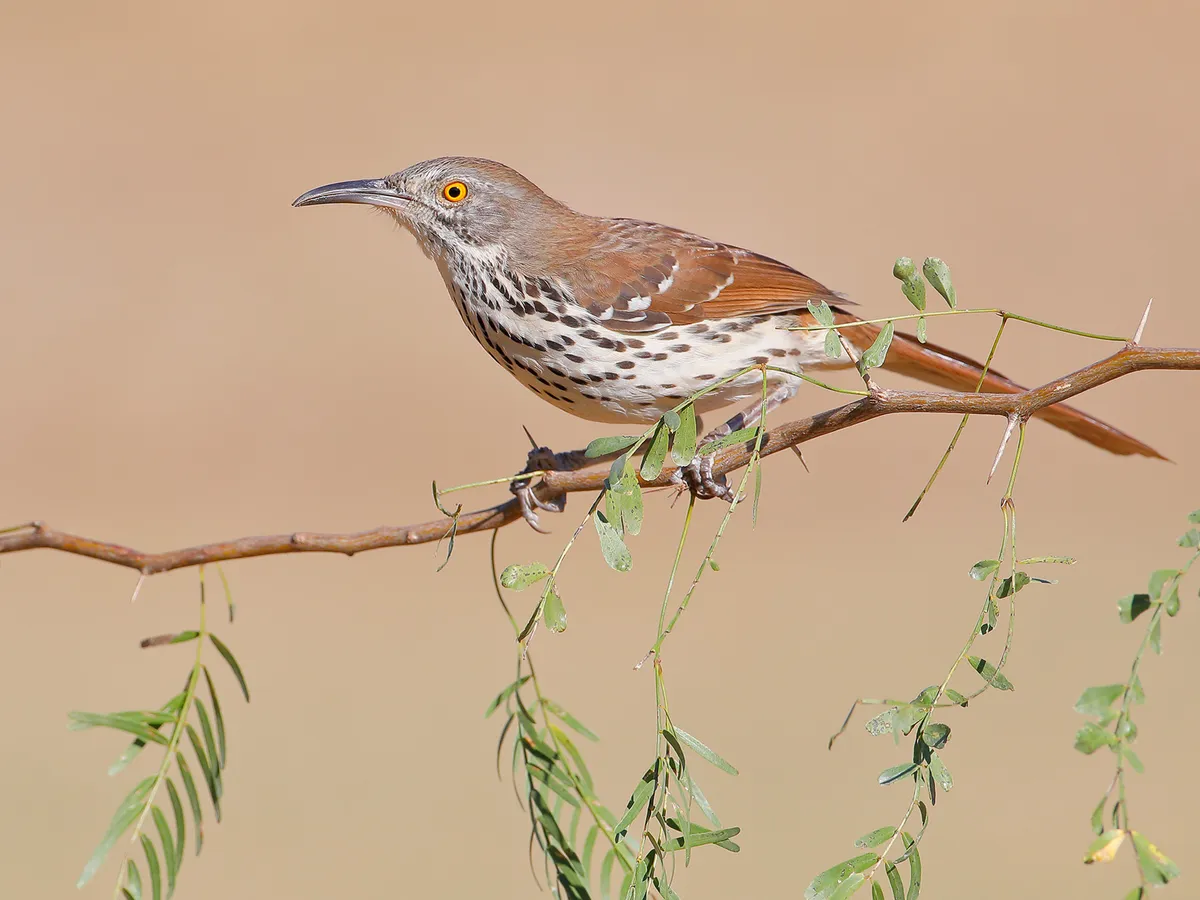
In Texas, the long-billed thrush may be mistaken for the brown thrush
Are female brown thrushes bigger than males?
Male and female brown thrushes are very similar in size, although the males are slightly larger in most respects. On average, the wings and beaks showed the greatest variance, although this is not a very useful field marker for birders.
Brown Thrasher Size
- Body Length: 10 – 12 inches (25 – 30 cm)
- Wingspan: 11 – 14 inches (28 – 36 cm)
- Weight: 60 – 89 grams (2.1 – 3.1 oz)

A pair of brown thrushes perched on a fence
behavioral difference
The best way to identify female brown thrushes is to observe their behavior. They differ by being quieter and more private than their mates.
Males can be particularly aggressive towards other birds, animals and even humans when nesting. Females are less territorial, but they will chase off other intruding females.
Brown thrushes have some fascinating courtship behaviors, even if these rituals are difficult to observe. Either sex can present a leaf or twig to their mate before mating.
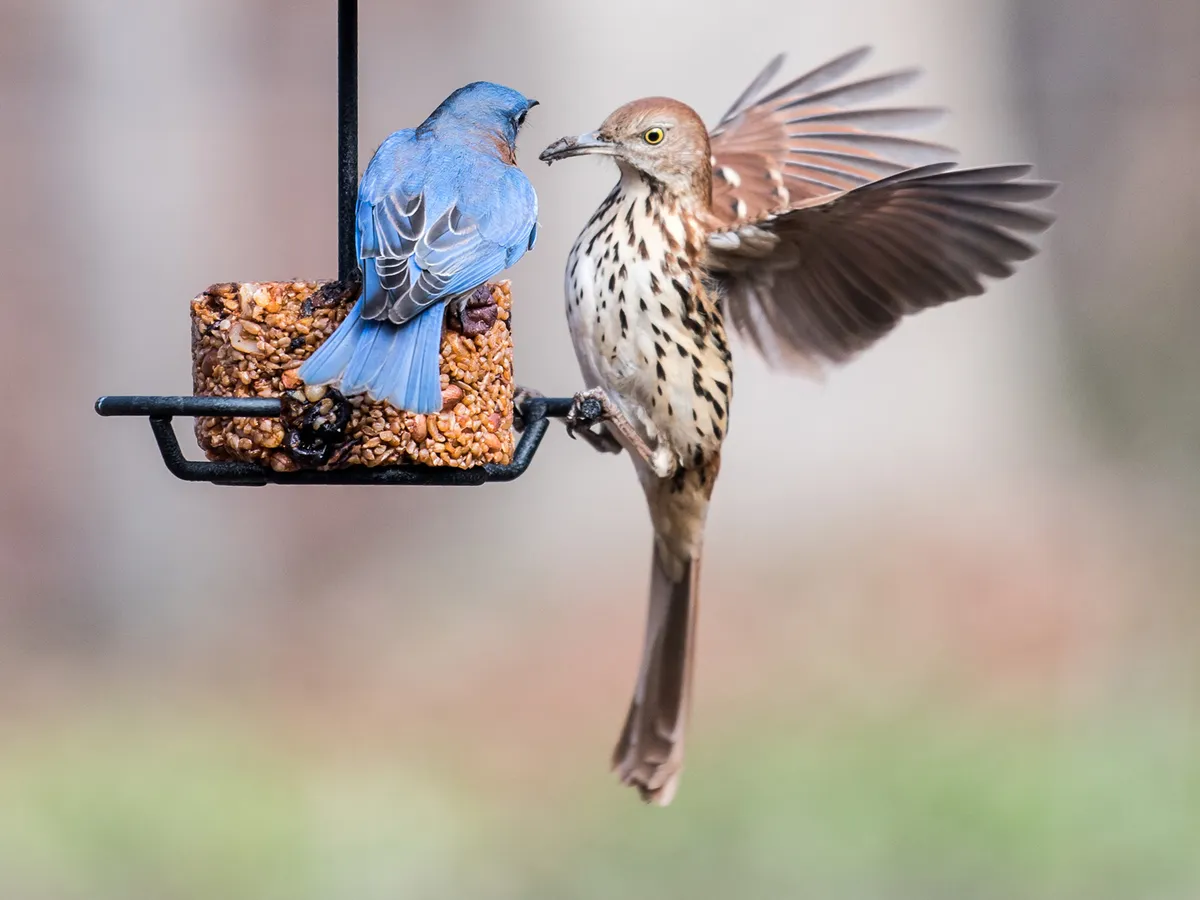
Bluejay and brown toucan at bird feeder
sing and call
Brown thrushes are excellent songbirds, even if they are a little underrated. These birds are skilled mimics, although they often sing their own songs. Brown Thrasher’s songs can be varied, though each phrase is often said twice before moving on to the next.
Female brown thrushes don’t sing like males, so their quiet way makes it easier to tell which brown thrushes are not females.
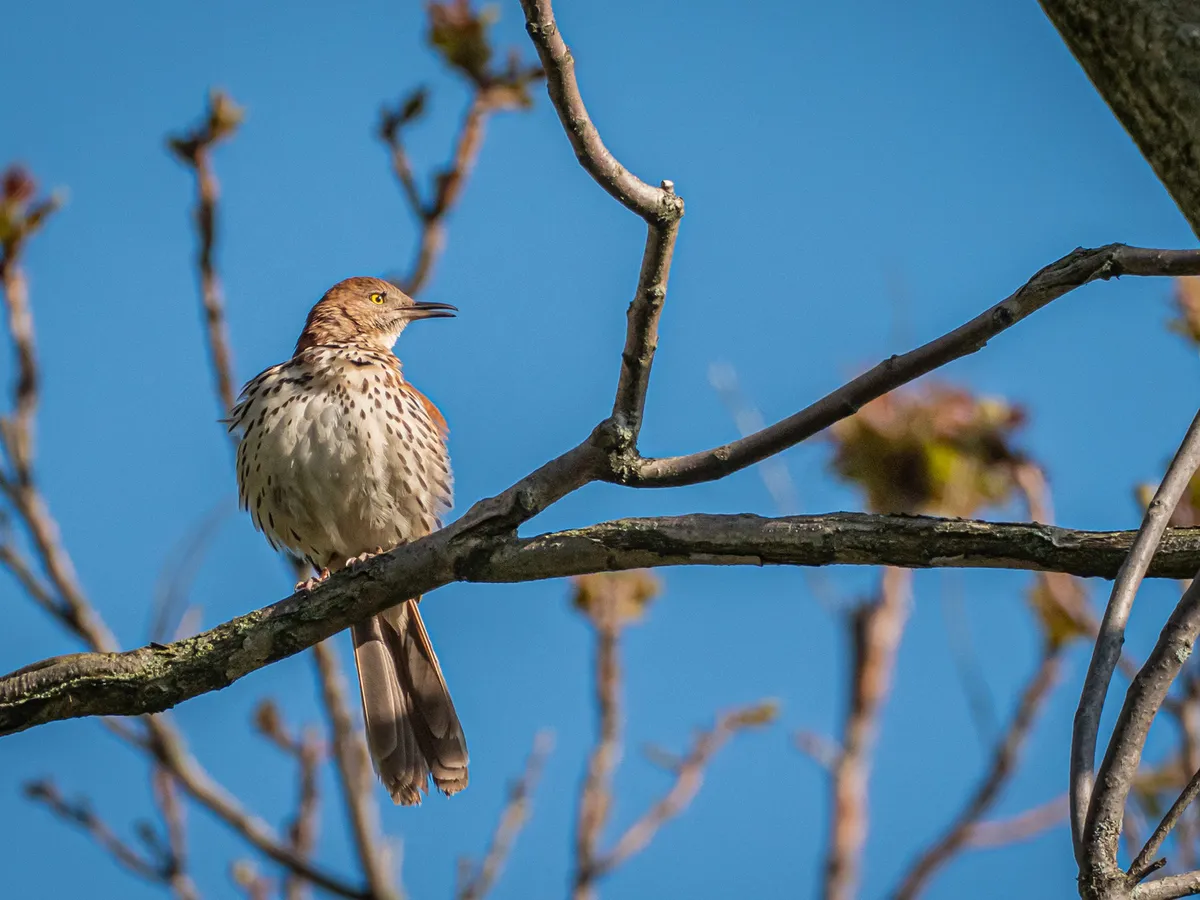
Brown thrush singing high in a tree
nesting and feeding
Brown thrushes are monogamous birds that cooperate and raise their offspring together. In summer, the female brown thrush lays three to five eggs in a sheltered nest built by both partners.
Both males and females feed and care for the chicks, further adding to the challenge of determining their sex.
Only female brown thrushes develop a brood area to incubate their eggs. Both partners assist in incubating the eggs for 11 to 14 days, although the female does about two-thirds of the work. Females generally spend more time brooding and sheltering chicks than males.
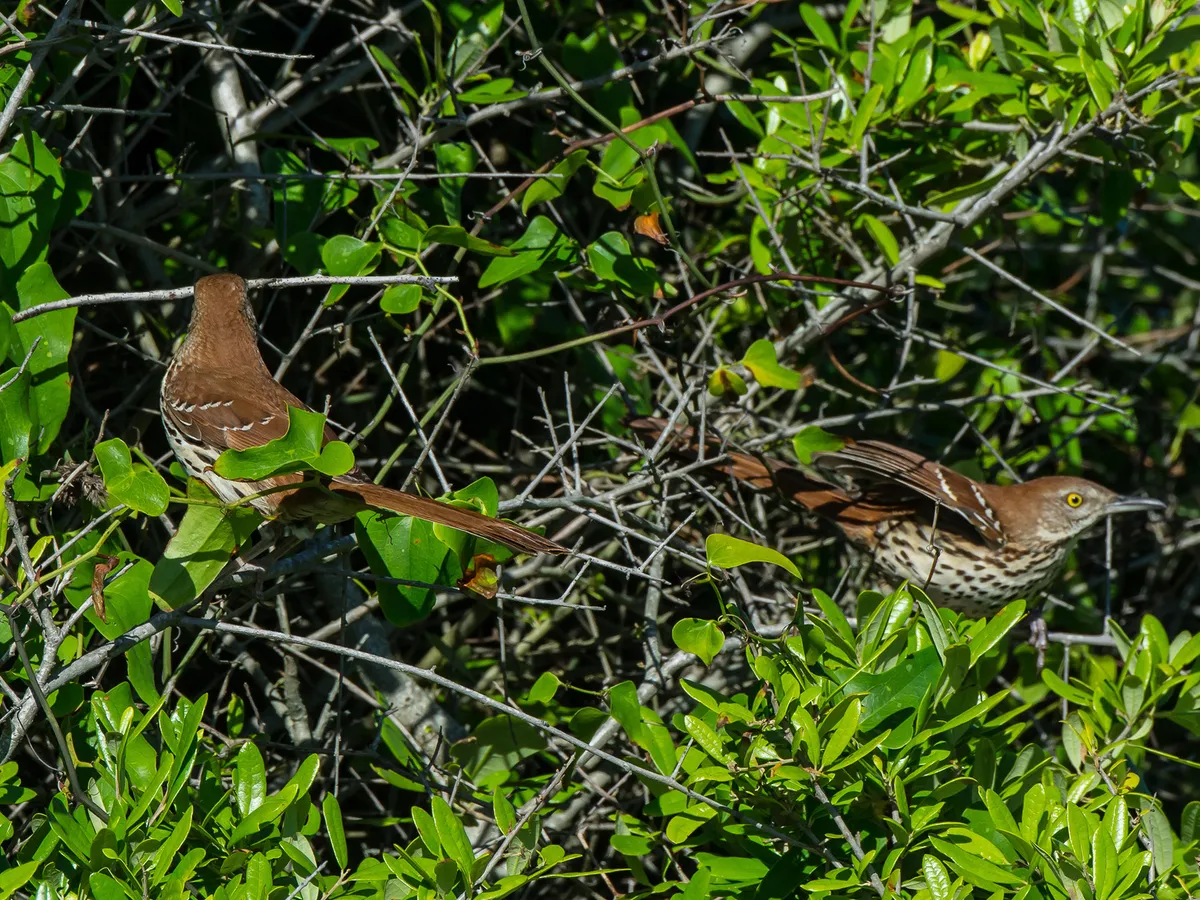
A pair of brown fulmars gathering branches for their nest
Can a female brown thrush raise her young alone?
A female brown thrush is unlikely to raise her young alone unless she loses her mate very late in the nesting process. These birds rely on the help of their partners to choose a nesting site, incubate their eggs, and feed their chicks.
Female Brown Thrush FAQs
What color is a female brown thrush?
The female brown thrush has a warm reddish-brown body and pale underparts. Their bills are black, their legs are pale yellow, and their irises are a conspicuous yellow.
Do female brown thrushes call?
Female brown thrushes signal to be alert, excited, or to bond with a mate. Their quick, high-pitched calls sound a lot like kisses. However, these birds make a variety of different calls, including hissing and whistling.
Do female brown thrushes sing?
Female brown thrushes usually don’t sing, but they may sing softly to their mates when they need to switch places in the nest. Male birds have a much larger repertoire, comprising more than a thousand songs, making them one of the most diverse singers in the bird world.
Do female brown thrushes go to bird feeders?
Brown thrushes feed primarily on insects, but they also eat fruit, nuts, and some seeds. Thrashers like to clean up under bird feeders, so if you want to feed them exclusively, sprinkle food on the ground. Planting native berry bushes and providing mealworms are great ways to feed these shy but popular songbirds.
Expert Q&A
ask a question
Do you have a question on this topic that we haven’t answered yet? Submit below and one of our experts will reply as soon as possible.
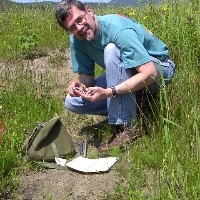
I am broadly interested in how human activities influence the ability of wildlife to persist in the modified environments that we create.
Specifically, my research investigates how the configuration and composition of landscapes influence the movement and population dynamics of forest birds. Both natural and human-derived fragmenting of habitat can influence where birds settle, how they access the resources they need to survive and reproduce, and these factors in turn affect population demographics. Most recently, I have been studying the ability of individuals to move through and utilize forested areas which have been modified through timber harvest as they seek out resources for the breeding and postfledging phases. As well I am working in collaboration with Parks Canada scientists to examine in the influence of high density moose populations on forest bird communities in Gros Morne National Park. Many of my projects are conducted in collaboration or consultation with representatives of industry and government agencies, seeking to improve the management and sustainability of natural resource extraction.











